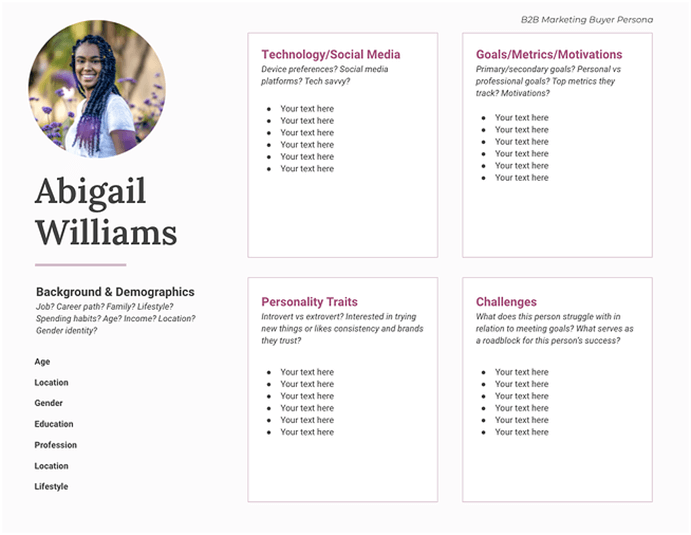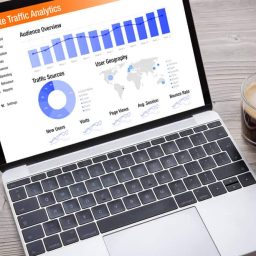

Is a good translator all you need?
Sadly, there are many misconceptions about the localisation skills of translators, and the impact this may have when working on important assets, such as your website. The process described here is mostly for small and medium sized enterprises (SMEs), because while large companies also need localisation, in their case it’s often more of a made-to-measure process.
Before we go any further, though, what does localisation really mean?
What is localisation?
A translation is the simplest form of language-related service that is offered by your language service provider (LSP). It is the process of rendering text from the source language into the target language so that the meaning can be understood. When translating formal documents, a translator may be enough, because the language is relatively simple.
However, if you’re working on marketing materials, which are supposed to help you build your company’s image and win the engagement of an audience in a new country, you need something more. Much more.
Do you need website localisation? We can help you!
Localisation is the process of adapting your texts to the socio-cultural context of your new market. It addresses all the non-textual components of the translation:
- Purpose
- Specificity of your target audience and their needs
- SEO requirements
- UX/UI aspects
And many other issues.
After localisation, your website should sound natural to your customers. It should be easy to read, by being fully compliant with the way your clients normally communicate.
So with that, let’s consider the nine steps to localising your website well.
Step 1: Preparation
The decision to translate and localise your website should be well considered. You may have decided to internationalise your company to conquer other markets, which is the most obvious reason behind localising your website. If you may be observing an increase in traffic from other countries (by Google Analytics or any other web analytics tool), then this may be a good time to consider translating and localising your website.
The second thing to consider is what you actually need to localise. Some companies just localise crucial elements and subpages on their websites. This is not always a good idea, as it unwittingly creates a sense of inconsistency, which clients may assume relates to your business. If you are working on specific landing pages, it is often good to test the new market potential on a small scale. For example, you can start with specific product pages to test ads and other elements related to the local market.
In general, the safest option is to localise all of your website-related elements, but this may depend on many factors, such as market, available resources, deadlines, business objectives, and technical content (see Step 4).
OTHER THINGS TO CONSIDER
As a part of the preparation process, you need to consider a number of basic factors:
- Your product or service: Can you simply start offering your products/services in the new market, or maybe you need to adapt them to it?
- Pricing: Will your pricing model still work in the new market?
- Target market(s): What languages, cultures and demographic groups do you want to communicate with?
- Team: Do you have the resources to help you with the localisation of your website? Perhaps there are employees on your team who can serve the new clients or other specialists knowledgeable about the new target market – you can use them in the process.
There may be more, depending on your business profile and needs
Finally, think about the desired form of this service. For the sake of simplicity, we present the three most common options to choose from, although in reality there may be more:
- Human translation and localisation: the whole process is done by human translators and localisation specialists, with limited support in the form of CAT tools.
- Machine translation: the whole process is done automatically using MT tools. There are also plenty of “free” tools available for this matter, but we will discuss them in some other posts.
- Hybrid solution: this includes both machine and human work – the base is done by the MT tool and then edited and improved by human specialists.
If you are after a truly natural “feel” for your website, you should concentrate on the first or third option.
Step 2: Understand the customer requirements
You cannot really localise your website if you do not know who your target audience will be. Specific groups within a country often use different forms of communication, dialects or even languages. You need to know if that is the case before you start the process.
Understanding customer requirements starts with creating a buyer persona. This is a representation or an archetype of your ideal customer. Buyer personas comprise the basic demographic information about your target customers, as well as their behaviours, motivations, intents and pain points.

In order to create a buyer persona, you need to gather more information about your future market and, ideally, get some solid data from your analytic tools. You can also use market reports and whitepapers to understand your target market better.
Unless you have just started your business, by the time you start localising your website in another language, you probably already have a sense of your current buyer profile – so that knowledge should be used when aiming for these new markets.
Another important way to understand your target market is through keyword research (see Step 4).
Step 3: Create a team and find an LSP
Achieving good localisation is never a one-player game. It is a process that should involve a number of people from your company, including:
- Marketing
- Customer service/sales
- Website maintenance, especially for custom-made solutions
- Creator of best solutions
Each of these roles has a different perspective when it comes to the objectives and their fulfilment. Make sure there is someone responsible for setting and maintaining the project scope. With the help of technical support, you should be able to extract texts for expert localization that can be used for the quoting process, whether this is done internally or by third parties. When this is not possible, web scraping methods can be applied.
If you are considering website localisation, it means you already have a website in place, so deciding what solution you need to use is easy. It could be WordPress, Shopify, Drupal, Wix or anything else – each of them having their own constraints.
It is usually a good idea to work with a company that can help you translate and localise your website. Such companies, known as LSPs, work with specialists who understand the target language and culture inside out. These include native proofreaders and experienced translators. They can provide a comprehensive service that includes planning, consultancy, research, localising and proofreading for all of your marketing texts, including technical support and final testing.
Here at Skrivanek, when we localise website content, we always ask the client about the general tone we should use. This means that your translated website remains fully compliant with your expectations. This is the kind of practice that all LSPs should follow.
Step 4: Take SEO and metadata into consideration
While all texts on your website are crucial, there is more to consider in the translation and localisation processes. There are website-related elements that are used by Google bots and other search engine crawlers to understand what your website is about, such as:
- Meta titles (title tags): these are displayed in Google (in the SERP) as the titles for the links to your website (so users see them only if you have a good organic position).
- Meta descriptions: these briefly summarise the content of a web page, and are also displayed in the SERP.
- ALT attributes: these small pieces of content describe what can be seen in all the graphics, images and photos you publish on your website.
Did you know that emoji signs can now be used in meta descriptions, as well as featured images?

All these and more will have an impact on your website’s SEO, although not directly. They can help get more users to click your links though!
Keyword research
Now there is the question of keyword research. If you want to rank as high as possible in Google, as most of our clients do, then this requires some research, such as what keywords and key phrases are used by users and customers in your market. There are many free keyword research tools available, including:
- Google Keyword Planner
- Keyword Surfer – SEO Chrome Extension
- Ubersuggest
Here at Skrivanek we primarily use two tools – Ahrefs and Google Keyword Planner, depending on your business objectives.
Keyword research also lets you see what products your potential customers are searching for, and how. You also get to see who your main “organic” competitors are, as they will also be visible. You can then analyse how your competitors are portraying themselves and even learn from them. We see that many people do not use “website localisation” as a search query, but instead use “website translation”, frequently relying on short and misspelt forms. Interestingly, misspellings can also be used for the benefit of your business – we use them successfully and always suggest you should as well in many cases, as they can generate good results!
Once you have already researched your target market, you can now provide the results to the company localising your website and ask them to consider the new keywords when localising your content. Why is this important? Incorrectly selected keywords can result in fewer searches in the new language, which means less traffic in the new market. At Skrivanek our keyword research is based on past searches in the source language or a new study based on the client’s brief.
Remember: keyword research is especially significant if your business has long-term plans to “fight” for organic traffic. However, if your primary source of customers comes from adverts on FB, LI, Google, or similar platforms, taking care of organic position may not be as important.
Step 5: Keep all your localised texts in one place
There is a good chance that you will have many files and instructions related to your new website version. It’s always a good idea to keep all these documents in one place, and cloud storage is probably your best bet. This means that your employees, contractors and LSP company can have immediate access to all the necessary files in their latest versions.
With a cloud disc, you can avoid many problems, especially those resulting from the fact that different people have access to different versions of the same file.
It is also worth using CAT tools not just to facilitate the process but also to store your web content. Of course, it’s always better to have unique page content for the web, but some things will stay the same and could be reused in the future. Keeping your CAT memories saves money on repetitions, helps to speed up the whole translation process and ensures your texts remain concise. If you choose to work with an LSP, they should have some CAT tools.
Step 6: Verify the localisation with a native speaker
While not every native speaker has the expertise to localise your website, you should always let at least one native speaker read your web copy before putting it online. If you work with a translation company, they can help you with that. Ideally, you need someone who represents your target audience, although the 3F approach is also always a good method if you are limited in resources – friends, fools and families. You may want to go a step further and organise a focus group to review the perception of your new website, but this step is not necessary in most cases.
Step 7: Test your copy (and your new website)
Before you launch your new website, it’s crucial to check whether everything looks and works properly. Ensure that all the subpages are properly translated and localised, that the layout of each new web page looks good and that everything is functional from a technical standpoint. Make sure you test it for mobile and desktop use. A review of the analytics can show you what is important for your business.
Some of the elements you need to check are:
- Names, currencies, measurements, units
- Internal and external links
- Images and their attributes
- Menu and website functionality
- Payment process
- Cart
- Compliance with Google requirements (use a free Google Lighthouse tool to check that)
- All the materials to download/view as PDF files
Language elements:
- Errors (spelling, grammar, punctuation, typos, etc.)
- Cultural appropriateness (terms, words and phrases)
- Overall readability of the copy and compliance with your company’s branding
Step 8: Put your localised text online
If you have been running your business for some time, then you should be in quite a convenient situation – you can use the same CMS system or e-commerce platform you have been using so far as the majority of these tools offer full support for different language versions.
What if you are just starting out? Here you need to opt for a relatively easy solution that offers support for multiple language versions, without generating additional costs. This includes CMS as well as e-commerce platforms, if you run an online store.
Once all that is done, the last step is to enable seamless switching between the available language versions. It may form part of the main menu, but you can also offer this option in the header or footer.

Step 9: Never rest on your laurels
Localisation, just like all the work on your website, is a never-ending process as long as you keep operating the business. You should continue to observe how your website performs, what customer reviews you get, what questions potential customers are asking, which aspects of your website and online presence in general work well, and which areas require some tweaking.
With such a proactive approach, you can quickly respond to market changes and provide excellent UX to everyone entering your website, no matter what languages you use.
If you need help with the translation and localisation of your marketing materials, including web copies, then we are happy to help. Drop us a line, and let’s see what we can do together!















